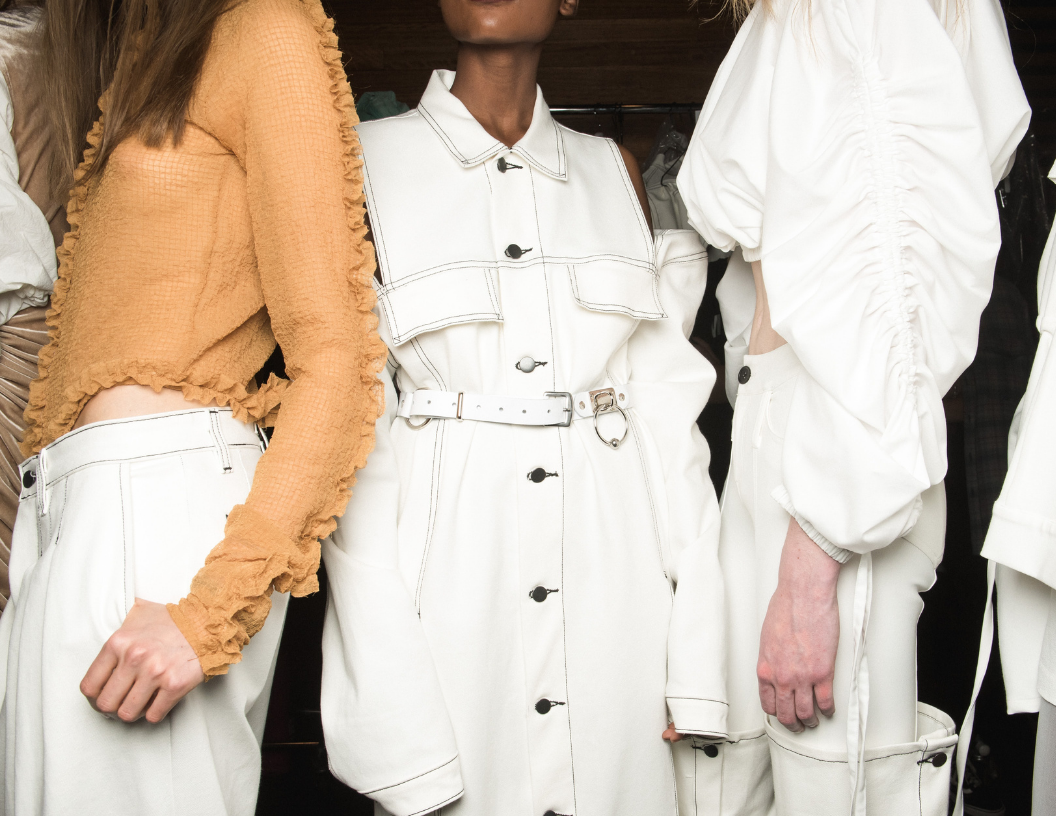When a brand represents fearlessness, confidence, and inclusivity, its influencer campaign needs to do the same. Achieve that at scale, and you have a huge win.
When Savage X Fenty first debuted in 2018, they knew an “influencer-first” strategy was the right fit for its unique brand personality. But it wasn’t until mid-2019 that things really took off and they developed a partnership program that let its influencers really shine. Today they partner with ambassadors in all shades, shapes, attitudes, and sizes, celebrating the individuality of content creators like micro-influencer Cristal Hernandez, body-positive Sarah Rae Vargas, and macro-influencer Ivy Powell.
Balancing automation and communication for the perfect fit
Savage X Fenty strategically automates many aspects of its partnerships with the Impact Partnership Cloud so its influencer team can spend maximum time optimizing each relationship in a personal way. For example, they use Impact to analyze the audience of each potential partner, first confirming the creator covers the right geos and demographics, excludes fake followers, and is aligned with the brand’s target personas.
In addition, by analyzing the tactics making its top performers succeed, the team is able to discover other influencers doing similar things. Using a combination of multitouch attribution technology and a checkout survey, Savage X Fenty can closely track campaign-driven incremental sales and full-funnel contributions on a performance basis so each partner can be fairly compensated for the value she produces.
Most important, the team depends on Impact to ensure they pay influencers when and what they are promised, which is a high priority for Savage X Fenty. Unlike an I/O, influencers are human beings, and commissions or contracted payments are their livelihood. Savage X Fenty takes that seriously, using Impact’s partnership automation technology to ensure it can easily and consistently meet all its payment terms on time and according to each contract.
You can learn more about their successful approach in our interview with Jennine Matthias, Director of Influencer Marketing at Savage X Fenty: Influencers by Savage X Fenty: The channel, the myth, the legend.
Or if you prefer, read the interview transcript below:
Todd Crawford:
Good to have you here. So, you know, I know you worked for TechStyle and I don’t think people readily understand who TechStyle is. It’s really a corporate brand. So why don’t you talk about who TechStyle is and who the brands are?
Jennine Matthias:
Yeah, so TechStyle fashion group is comprised of five brands. So the brand that I work on is Savage X Fenty, which is Rihanna’s lingerie line and it’s a joint venture between Fenty and TechStyle. The other brands are Fabletics, Justfab, ShoeDazzle and fabkids. So we all work together in the same office and we have some people on our team who are shared services that work across all the brands and then some people who are embedded within the brands themselves.
Jennine:
So I was brought on to work across all the brands on our media team to do influencer marketing. We were working with influencers but not, so we were working with large scale influencers with large partnerships like Kate Hudson and Fabletics and we were also working with micro influencers, giving away free product in exchange for posts, but we didn’t have that middle ground covered where we were paying influencers to post for us, to promote our products. And so I was brought on to start that sort of tier of influencer. So at the time I was working mostly on Fabletics, just fab and ShoeDazzle finding influencers who, I thought would drive sales for us. So we’re very CPA focused. We’re always looking to drive sales. That’s when we’re spending dollars. We need to make sure we’re hitting those targets. And so my program was set up to do that, to drive sales.
I was, I worked for a company called E-salon, which is a hair company, hair color, hair care products, and I was doing influencer marketing and I also did our organic social media. Prior to that I was at FameBit, which is an influencer agency that is owned by YouTube now. And it wasn’t part of YouTube when I was with it. It was a startup. But, so I was there working with a bunch of different types of brands, who wanted to get into influencer marketing but didn’t necessarily want to bring it in house. And then after I left and went to an in house marketing team, I really formed the opinion that influencer marketing really should be done in house.
I think it’s so valuable to have someone who actually works for the brand and understands the brand, be the advocate, and look for those influencers rather than hiring an agency who might not always have the same exact understanding or the same interests. Like the alignment just isn’t as good. I think there’s benefits to working with agencies, but I think there needs to be at least one person in house who is really spearheading influencer marketing.
Todd:
So along with kind of the growth of the industry and I guess people taking it on as a profession as opposed to maybe accidentally becoming an influencer, how have the metrics or KPIs changed from early days to now?
Jennine:
As the industry has grown, I think that brands are realizing that it’s more than just a brand awareness play. I think there are a lot of companies that still consider influencer marketing a brand marketing sort of endeavor. And they, they look at how much reach they’re getting and the exposure and even things like engagement. As people are getting smarter about influencer marketing and as people are sort of realizing that they don’t want to just spend a lot of money and hire an influencer and have them post in that be it. Like it needs, there needs to be a lot more thought behind it and there needs to be sort of a plan to actually hit the KPIs that you’re looking for. So I think there, I think that the smart brands and smart marketers are thinking of influencer as a performance channel and it really is a channel that you can have under acquisition marketing rather than brand marketing. I think it touches both, but I think there, there really are the really our sales to be had here.
Jennine:
People are getting more wary of spending a lot on influencers and having it, having it not do anything or having it not be measurable. So I think that that’s the direction that it’s headed.
Todd:
How does the company view influencers, I guess in comparison or in addition to the other kind of marketing acquisition channels that are out there? Like search or social?
Jennine:
So we, we really have that kind of influencer, I guess first kind of model and it’s really, really, really important to us. And you’ve been able to find a lot of value in, in building these influencer relationships.
Todd:
Aside from revenue, is there any more value that you’re providing when you engage with influencers? What is the brand value proposition?
Jennine:
So first and foremost, like I said, it’s them driving sales, and they do, via them promoting the products, showing off the latest items we have. But we also get a lot of value from the content that they create. So we’re able to use that content in our paid media. So we actually are able to create, say, an Instagram ad with the influencers content and we’re able to spend even more and make that content go even further. It really is that they’re the best content creators. So, I mean, it’s like UGC, but we, you know, it’s like IGC influencer generated content and it doesn’t, you know, we, we work with influencers of all sizes. So sometimes we have someone who has a lot of followers and we create an ad and people recognize them in the ad, which is great, but it’s not a hundred percent necessary. Like we, we’ve also created ads with people who don’t have a ton of followers and it still resonates because it’s someone that you know is relatable and they’re really good at creating that content and explaining what the brand is. And so we get a lot of value from that.
Todd:
Internally, when you look at share budget, how, how’s that battle fought and won, for against the other marketing channels, right? Like, you’ve got to spend money to make money, and there’s other channels competing. So what, how do you position the value over the other channels?
Jennine:
Yeah, I mean it’s a good question. I think it’s a little, it can be a little tricky because even though, you know, I go on and on about how influencer can be a performance channel and can, you can actually see the sales that come through, there are, attribution is very difficult with influencer marketing and you are getting value, you are getting sales that you’re not able to capture because we don’t have, you know, view through, you don’t have those types of metrics that you would have with Facebook or YouTube or you know, all those other types of ad platforms. So there is a little sense of like, you’ve got to believe that it’s working. But you know, there’s certain tricks that we do to actually make sure we are capturing as many data points as we can.
What we do is we have a question that we ask you when you’re about to check out, which is how did you hear about us? And it’s a huge piece of how we know that the channel is working because people do let us know, you know, what influencer they heard about us from or that it was an influencer in general. And that really helps us to know, is it working?
Todd:
So you guys have, I guess more of a proven track record of it working. Was there any kind of justification to get it going? I mean, you were already proving it at other textile brands, so maybe it wasn’t as hard.
Jennine:
Yeah. I think the key is really starting out slow and building gradually rather than going out and signing a million people. I think you have to do testing. I think when you first start out, there’s definitely gonna be some failures and there’s going to be some wins. And I think it takes a while to figure out who that right influencer is that fits your brand and even what the right metrics are to look at when you’re evaluating an influencer and figuring out how much to pay them.
Todd:
So what do you think the breakage is on that? I mean, not everyone is gonna tell you that. I mean, do you, do you have a good feel for that?
Jennine:
Yeah, it’s, I mean like I said, that’s why you gotta have a little bit of faith. But I think, I mean we’ve made some data adjustments based on that. so we have a multitouch attribution model where we will adjust, cause a lot of times someone’s going to see a Facebook ad or see pre-roll. And then they’re still going to select influencer when they go to check out. So, for channels like influencer and also podcasts like channels where you don’t have a great way to attribute, we actually can update those numbers a little bit based on what we’ve seen with the data, to make it fit a little bit more with what we actually think is happening. And, and that’s, that’s really the best we can do. I mean we think of all the time about how to improve attribution for influencers and it’s really tricky. I don’t think it’s something that’s totally been solved yet. So hopefully someone comes up with something cause I think, I think there’s, there’s more work to do, but I think it’s, it’s a tricky one.
Todd:
So when it comes to finding new partners, I think that’s probably the biggest kind of leap of faith that someone’s starting an influencer channels like, oh my goodness, how am I going to find these partners and will they work with me? How do you get started? How do you find those first handful that you test with? What do you, what’s your best advice on that?
Jennine:
My best advice is to be on the platforms, watch the content, be there looking at what people are doing and who’s doing it well and reach out. I think it, I think you’re definitely right. I think I have a huge advantage. This is a great brand, but I think, you know, as long as you can communicate and reach out and let people know what the value prop is that you, your brand has and you find those influencers that resonate with that, I think that’s on you to kind of go out there and see, you know, okay, what is my brand? What, what type of people like my brand? I would even look at, you know, who’s your target? Who’s your, who’s your customer? Like when, you know, when you have your research team probably who knows exactly who your customer is and you should look for people like that who are creating content and find those people and reach out.
Jennine:
I think there’s a lot of really great people in the, you know, maybe two to four hundred thousand follower range that you can probably reach directly. A lot of them have their email listed on their social and they’re looking for great brands to connect with and do sponsorships with.
Todd:
Is it better to test with kind of a mid size versus the really big ones or, you know, will I get so much bang for my buck out of a big one, but obviously there’s more risk if I don’t get them right. How do you, how would you suggest the approach should be there?
Jennine:
I would suggest not, I mean, you don’t want to just blow all of your budget on one person. So I would suggest I really like a diversified approach where maybe, I mean if you’ve got a budget, I would try to find one person maybe who’s on the bigger end, who you really feel strongly about that you love what they’re doing and you think they’re a great fit and they have really highly engaged audience and their audiences in the right demo that you’re looking at. I would try to bet on that, but I would hedge your bet by working with a number of smaller influencers. Cause a lot of times you’ll find, you know, someone that surprises you and drives a lot of sales that you might not have expected. So I would, I really just am an advocate for a diversified approach of, you know, testing out a bunch of different people and don’t put all your eggs into one basket for sure.
Todd:
So when it comes from a tech standpoint, what are the kinds of things that an influencer channel needs to have? What are your kind of mandatory components or recommendations?
Jennine :
What’s most important to me is making sure that I can pay an influencer in an easy way. If you can’t meet the payment terms and you’re late to pay, it’s, you know, it’s not like Facebook where if you’re late to pay, like they might charge you interest and they don’t care if you’re late, whatever. But, with, this is a human being and this is their livelihood and so you need to be able to reliably get them paid. So that’s, that’s one of the key things, definitely that it’s needed.
Jennine:
It’s tricky. I think that from that perspective. I don’t know that there’s like a perfect platform, at least I haven’t found one that literally does everything. Like I said, I haven’t found anything that can replicate or replace a spreadsheet with the flexibility that it has. But I think that what really draws me to Impact is the fact that they have sort of both things. Like there’s a platform that I can use to reliably evaluate an audience, the audience of an influencer and that can reliably pay my influencers. So it’s, I haven’t actually found a platform that does just both of those two things.
Jennine:
Another aspect of Impact that I always look at is the data. It’s really, real time. It’s really great for me to be able to see how many clicks and influencers driving and since we have an API integration, I can check, you know, leads and revenue and a bunch of other, elements that I would look at and use to evaluate influencers. And it’s really handy. But actually, influencers themselves or their agents when they have their impact accounts set up, they can actually go in and look at those stats themselves and I can sort of help guide them to what you know as to which reports to look at, what to look for. So that it kind of gives a nice validation. Like it’s not just me as a brand saying you drove X sales, it’s a platform that’s showing them that data where they can see it for themselves.
Jennine :
And I think it’s been really helpful. You know, for some agencies who are wondering for their own influencers, what type of posts and what type of content is working best and what, what does my influencer do best? And, they can look and see, you know, on days when certain posts went up, was there a spike in clicks? Was there a spike in sales? What was going on? so it’s really valuable information. And then for those people that I do work with, that will get paid, you know, based on how many sales they drive, Impact makes it super easy that I don’t even have to do any work really. It actually calculates all that for me and handles the payout. So it’s really great for anyone that’s commission-based.




